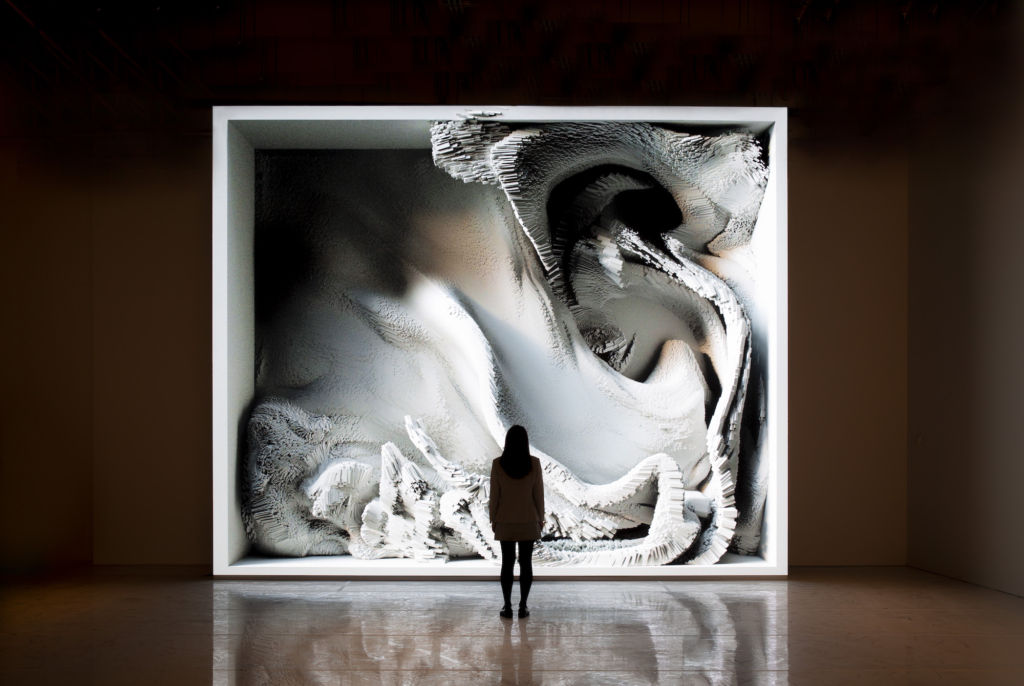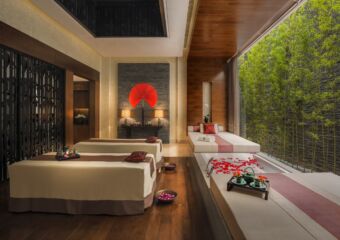Melting Memories, by Refik Anadol
What unites a Dutch master of religious painting and contemporary digital art? “Garden of Earthly Delights” at Wynn Palace Cotai is not just a beautiful name for an Art Macao exhibition, it is a homage to one of Hieronymus Bosch’s most famous works. What aspects do Bosch’s artwork and contemporary artists share? To figure out the connection and highlight some of the most interesting works, we created this guide to “Wynn – Gardens of Earthly Delights” exhibition, so keep on reading!
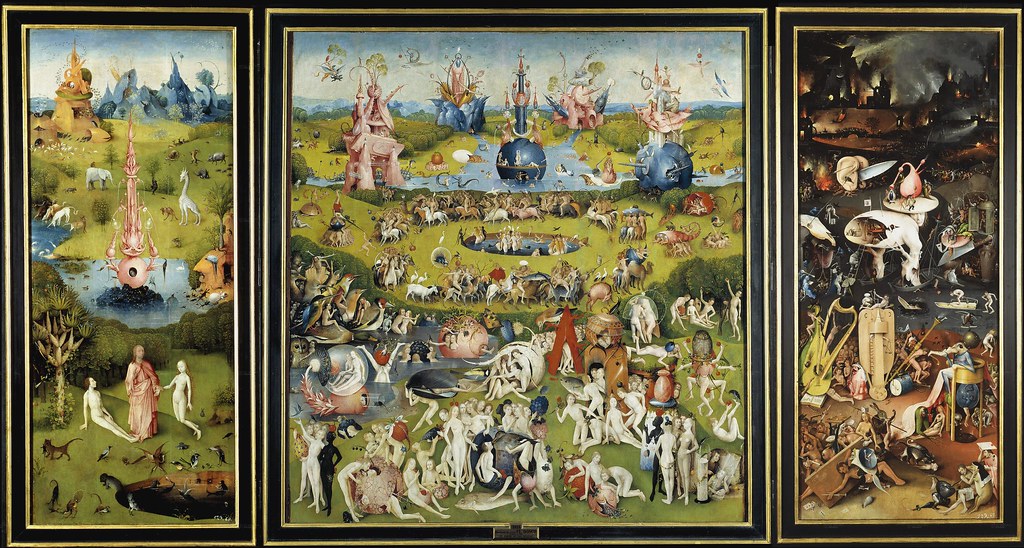
The Garden of Earthly Delights, by Hieronymus Bosch
Bosch’s triptich is a complex work of art with a myriad of interpretations. The left panel depicts the last three days of God’s creation while the one in the center is the most important and mysterious with hundreds of fine details and characters. These details compose the “Garden of Delights” where everyone seems to be having the time of their lives. The right panel terrifies the viewer with the tortures of Hell. Art historians keep revealing new symbols and meanings and argue about the main idea behind this piece of artwork. Whether it was a warning of how dangerous temptations can be or a visualization of the circle of life and afterlife or an allegory of sexual joy, we’ll probably never know for sure. What is certain is that this monumental piece remains one of the most influential works in the history of art.
Refik Anadol, “Melting Memories”
Bosch’s work is a representation of how the human brain pictures the unknown and undiscovered. Refik Anadol, on the other hand, through contemporary art tools demonstrates what is studied but is rarely visualized in an art form–motor movements inside a human brain. Unlike the Dutch painter, Anadol is a digital artist who doesn’t utilize imagination and instead uses a lot of data, scientific experiments, and latest technological discoveries.
To collect the data that became the basis of “Melting Memories”, Anadol used advanced scientific technologies. People involved in the process were asked to focus on specific long-term memories while the scientists recorded their brain activity. The collected data was then processed by the artist and his team then recreated as multi-dimensional visual structures. So what might seem like a random wave movement, flower blossoming or sand flowing is a complex intersection of science and contemporary art.
Refik Anadol is a Turkish artist who lives and works in Los Angeles, USA. Read more about him and his other series of works called “Macau Currents” here.
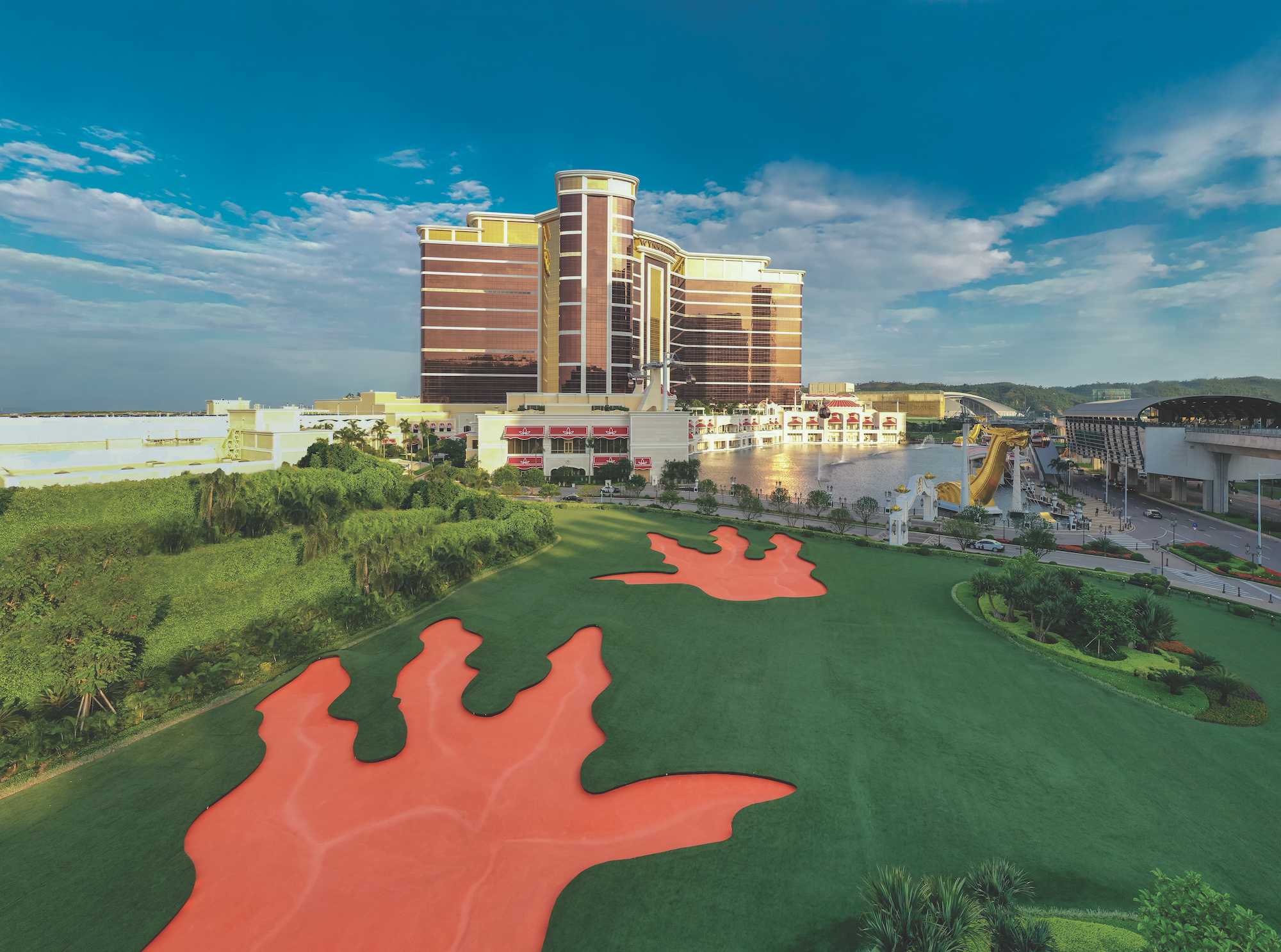
Dragon’s Footprint, by MAD Architects
MAD Architects, Dragon’s Footprint
Some of the works are impossible to miss due to their size. We are talking about “Dragon’s Footprint”, a large-scale work by MAD Architects. The best way to view this is to take a free ride in the Wynn Palace Cotai’s SkyCab.
MAD Architects and the founder Ma Yansong has helped China to level up in the eyes of the international architects community. A Yale University graduate and a former employee of Zaha Hadid Architects, Ma Yansong became the first architect from China to be awarded the prestigious RIBA International Fellowship. Ma Yansong and the architects at his agency believe in the harmonious existence of humanity and nature. His futuristic creations are often inspired by landscapes, and in this fashion, he is like Antoni Gaudi who also brought forms inspired by nature to his designs.
While the golden dragon will forever support the cable cars transporting Wynn Palace Cotai’s guests into the resort, his footprints are still visible right next to him! Jokes aside, the gigantic footprints of a mythical creature are a brilliant metaphor. Located in the middle of a modern and rapidly developing Cotai, it is both a symbol of the cultural routes and a reminder that the unusual and beautiful can be found if you know which angle and where to look at it from. It is also a nudge to all of us to set our phones aside and just observe.

Silence Dogood, by Jennifer Steinkamp
Jennifer Steinkamp, “Silence Dogood”
Another artist who works with digital art to transform space is Jennifer Steinkamp. Her first works were mainly colorful abstract projections. Later she began to explore the power of nature and its various facets, whether creative or destructive.
“When you are looking at the ice cube it’s actually melting, the surface is moving. That’s the effect I was looking for these icy particles that create static electricity”, Steinkamp says about “Silence Dogood”. She claims that she got the idea while reading a biography of Benjamin Franklin who discovered that static electricity and lightning were the same phenomena. That made her curious about the process of lightning formation. In the process of studying, she discovered lightning appears when ice particles collide creating an electric charge. Steinkamp’s goal was to motivate curiosity in a viewer, to raise questions about the universe and the processes within it.
“Silence Dogood” seems chaotic yet orderly at the same time. Hence, the association with the cosmos and the Big Bang theory is inevitable. Standing in the middle of the whole artwork surrounded by the gigantic floating particles, it’s hard not to start asking existential questions. Creation of the universe, supernatural and natural powers–these are classic themes of the artists of centuries past that are still present in the works of modern artists. All that connects Steinkamp with Bosch, who also tried to address the same themes through his paintings.
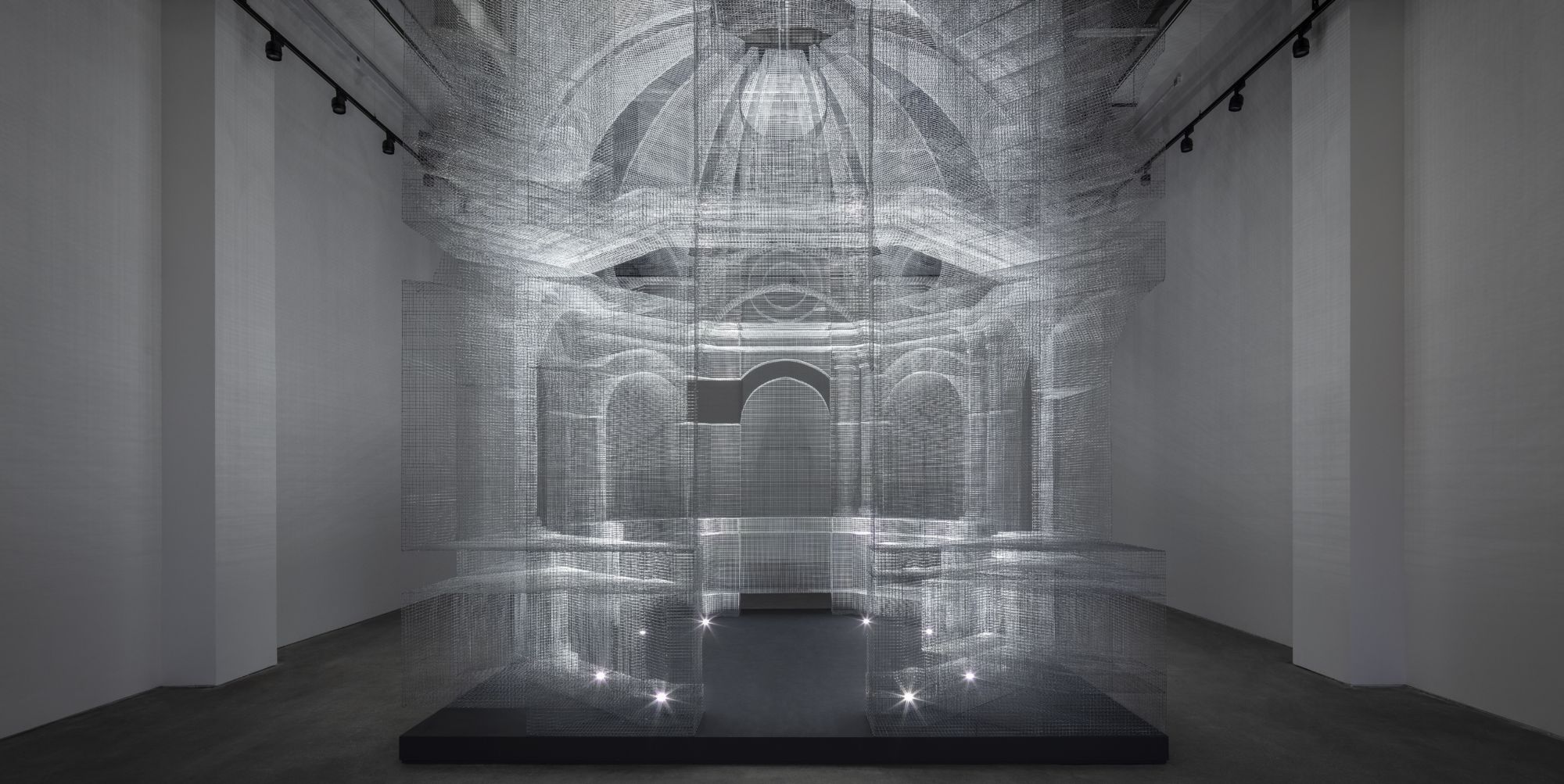
Sacral, by Eduardo Tresoldi
Edoardo Tresoldi, “Sacral”
Tresoldi is famous for his mesh installations. He augments objects or space with mesh structures that portray something in between the real and illusory world. His collaboration with the Italian Ministry of Culture in 2016 to restore the Basilica Paleocristiana of Siponto became the first major artwork of its kind. Moreover, this project brought him the most prestigious architectural award in Italy and a spot on the Forbes’ 2017 list of the 30 most influential European artists under 30. That recognition led to more large-scale projects such as massive installation “Etherea”, a mesh sculpture built for Coachella.
Transparent wire mesh–the tool of Tresoldi’s choosing–becomes a bridge that connects two worlds of art, classic and contemporary. He turns metal wire, solid and dense material, into something that’s weightless and fragile; monumental architecture becomes delicate and soars high. “Sacral” is like a ghost from the past; a blueprint; a light projection. In other words, it is an open door for different interpretations and contemplations.
Want to learn about the rest of the “Wynn – Garden of Earthly Delights” artworks? Visit the exhibition at Wynn Palace Cotai. To make your visit to the exhibition informative and interactive, the Wynn team developed a digital map with information on each artwork and artists. You can scan QR-codes on each info plate, listen to the audio guide and even customize a photo using the pictures of art objects. If you have further questions, ask the local staff or visit the Wynn Palace Cotai Instagram page to see some cool videos featuring artists and their art.
Art Macao: Wynn – Garden of Earthly Delights
When: Daily 10:00am–10:00pm, June 6–October 6, 2019
Where: Art Gallery, Wynn Palace Cotai, Avenida Da Nave Desportiva, Cotai and Wynn Macau, Rua Cidade de Sintra, NAPE, Macau
How much: Free admission
For more information on the art exhibition, visit their official page or send an email to [email protected]

